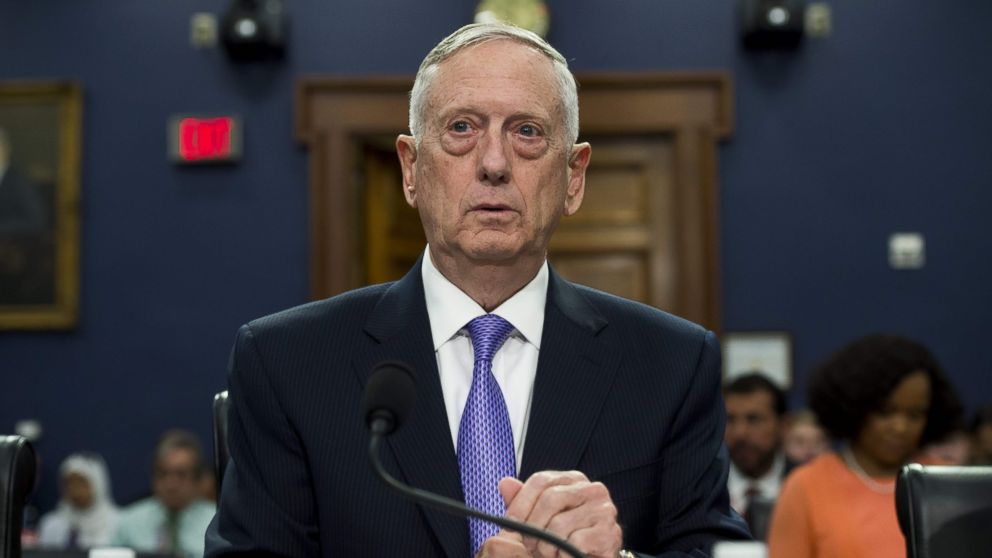Pentagon regains authority to set combat troop levels
The Pentagon had this authority prior to George W. Bush.

— -- Defense Secretary Jim Mattis now has the authority to set U.S. troop levels in Afghanistan, Iraq and Syria.
Earlier this week President Trump delegated that authority to Mattis, delegating an authority that had resided at the White House during the George W. Bush and Obama administrations.
The move is another sign of the flexibility the Trump administration has given U.S. military commanders.
ABC News looks at the change and whether anything will change in the U.S. military posture in Iraq, Syria and Afghanistan.
Force Management Levels
Mattis will be responsible for setting what are formally known as the "Force Management Level" or FML for American troops in Iraq, Syria and Afghanistan.
FML's were effectively caps set by the White House on the number of troops that could be deployed to each country.
The caps became most visible after the U.S. military returned to Iraq in 2014 to train and advise the Iraqi military in the fight against ISIS. In an effort to prevent a full-out combat mission and to stress the advisory role of the U.S. military presence, the Obama administration placed very specific limits on the number of troops sent to Iraq.
But over time the caps kept rising to meet the need for additional troops as the scope of the mission kept growing. What was initially a mission for 300 troops in Iraq in 2014 has grown to the current authorization of 5,262 American military forces in Iraq.
The American troop presence was eventually expanded into Syria where the U.S. military is authorized to have 503 American troops to train, advise and assist the Syrian rebel forces fighting ISIS.
But the number of troops in those countries is actually higher because additional forces on temporary assignments lasting less than 180 days are not counted as part of the official force management level. That means there are more than 6,000 American troops in Iraq and more than 900 American troops in Syria.
The capping of troop numbers has also meant that some of the support and maintenance duties that would have been handled by military personnel are handled by contractors.
The Pentagon says restoring the troop authority to the Pentagon will mean better transparency about the actual number of American troops in both countries.
Why bring the authority back to the Pentagon?
In late April President Trump delegated to Mattis the authority for troop levels in Iraq and Syria.
A Pentagon spokesman said at the time that the decision was a return to an arrangement that had typically existed prior to the Bush and Obama administrations.
The delegation of troop level authority would let the Pentagon respond faster to urgent troops requests from military commanders, according to Pentagon spokesman Captain Jeff Davis.
"Bringing the authority really back here where it’s historically been enables military commanders to be more agile, to more quickly and efficiently support partners, to have more rapid decision-making, and to keep units together," said Davis.
Mattis will be able to set troop levels in Iraq, Syria and Afghanistan but the broad strokes for the American military missions there will still be closely coordinated by the administration and other agencies.
More troops for Afghanistan?
Earlier this week President Trump also delegated to Mattis the authority for troop levels in Afghanistan.
At a congressional hearing on Thursday, Mattis stressed that President Trump had not "fully delegated all authority to me, he maintains strategic oversight" for Afghanistan.
Mattis explained that while President Trump had delegated to him "the details of forces that will be allocated to support what he approves finally as a strategy" for Afghanistan, "I assure you this is not a carte blanche for me to come up with numbers that are going into this."
There are more than 8,400 American troops in Afghanistan with a mission of training, advising and assisting the Afghan military in its fight against the Taliban and the ISIS affiliate in Afghanistan. About 2,000 of those troops are involved in the counter-terrorism mission against al Qaeda and ISIS.
The U.S. military has proposed sending an additional 2,000 to 4,000 American troops to Afghanistan.
This week Mattis told Congress that by mid-July he might have an idea of how many more U.S. troops could be needed after the administration concludes a review of its Afghanistan strategy.
Mattis also noted that the additional troops could meet shortfalls for air power, logistical support and intelligence support for the Afghan military.




